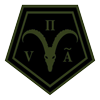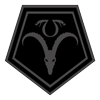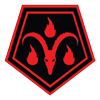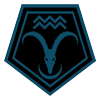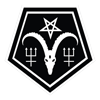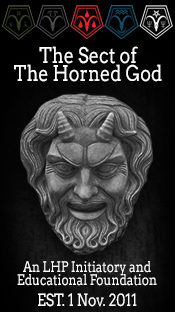Jung v. Freud: Mapping the Psyche

By Ryan Norris
Carl Jung’s theory of the unconscious and its structuring of archetypes was a way for him to explain common occurrences in psychological phenomenon seen in his patients and their dreams. Jung no doubt took influence from his teacher, Sigmund Freud, but did not fully agree with Freud’s complete theory. As such, the two men had similar structuring to their theories of the unconscious but different mechanical perceptions. A big differences was Jung’s idea that the deep unconscious, or as he called it, the collective unconscious, was structured by archetypes that are common to all people all over the world. Freud’s theory seems to lack this shared structuring in favor of a totally personal make-up.
For instance, Freud believed the unconscious was composed of all the things an individual does not accept or represses. This includes memories, adverse thought cycles, unacceptable instincts and impulses and thus he believed the unconscious is constructed by the individual from the age of 3 or 4 years old when the ego begins to develop. Jung, however, believed the unconscious develops first before birth. His theory describes the unconscious as the foundational structuring of an individual’s personality, instinctual awareness, and psychic build. Freud broke the unconscious up into 2 areas: the preconscious and the unconscious. The preconscious he described as all the automatic functions of the mind and the unconscious he described as a force of psychic will that is below the conscious awareness. Jung also had 2 areas of unconsciousness: the personal unconscious and the collective unconscious. The personal unconscious is 100% unique to each individual as it contains all the psychic experiences that do not currently occupy a place in the conscious awareness. The collective unconscious is comprised of the inherited psychic structures (the archetypes) which, again, all humans share. These are instincts and impulses where as the personal unconscious is emotion, memory and things the conscious mind has filtered out.
Freud had developed his own archetypes in the form of the Id, Ego and Super Ego. The id is instinct and primal impulse, ego is the regulator of a persons impulses, and the Super Ego is the moralistic center. He placed the ego as the totality of consciousness, the id as the center of the preconscious and the super ego as the control unit of the unconscious. The id wants instant gratification but the ego wants to avoid the discomfort that may come as a result of the perceived unfavorable behavior and the super ego balances the two other parts and is responsible for feelings of guilt and shame.
The theory of the collective unconscious was developed by Jung during his time working with schizophrenic patients at Burgholzli hospital. Jung placed all archetypes in the collective unconscious and specifically identified 4 main archetypes; though he acknowledged the near limitless number of archetypes possible. The persona is the archetype that forms an individuals conscious interaction with the external world. It is comprised of the social masks put into place in order to survive comfortably in a person’s external environment. The shadow is composed of the instinctual and sexual structures of an individual. This is formed from the socially unacceptable parts of an individual’s psychic make-up. The anima/animus is the contra-sexual aspect of the psyche. It is the archetypical image a man in a woman and the archetypical image of woman in a man. And finally, the archetype of the self. This is the unified conscious and unconscious as a whole.
Jung did not accept the notion that a person is born with a blank mind and thus imposed his theory of archetypes and the collective unconscious as a way to counter this notion. This structuring takes into account the inherited aspects of the psyche that are genetically determined and that can be see in not just humans but animals as well. A documentary on the largest group of chimpanzees ever recorded in the wild at Ngogo national park in Africa provides and excellent example. Entitled Rise of the Warrior Apes, it documents the research collected over 40 years from a number of primatologists on the social behavior of the large chimp tribe. The apes demonstrated many human like behaviors such as the instinct for war, resource depletion and social punishment which can arguably be primal archetypical psychic tendencies.
The archetypes tend to manifest themselves in dream images and motifs, as well as religious and cultural manifestations. This happens when they enter the conscious mind and become actualized through the individual’s thoughts, impulses, and dreams or nightmares. Learning how to understand the language of the archetypes is a part of Jung’s individuation process. By taking long term records of one’s dreams, divorcing one’s self from the falseness of the persona, and coming to a point of self-realization one uncovers the true self (the Jungian archetype of Self) and separates the psyche from all outside mindsets. Thus, individuation is painful, scary and can be seen as left hand path when done consciously. When conducted unconsciously, like the time from the ages of 3 or 4 years old to adulthood, it can be more closely relates to the right hand path.
Both of these men contributed greatly to the field of psychology. Jung, however, provided a more complete view on the topic and his individuation process is parallel to a process of sinister illumination. It embraces the primal, refines the consciousness and brings about the wholeness of self. We at The Sect of The Horned God recognize this and we are not afraid to pick up the map and walk the path inward. The map isn’t detailed though. One must fill in the blank spaces with the details of their own psyche. But a word of warning: be ever so careful you don’t get lost in there. The dark forests and deep waters of the microcosm are twice as dangerous as their macrocosmic counterparts.
Source Material:
Academy of Ideas, Carl Jung: What is the Individuation Process, https://academyofideas.com/2017/10/carl-jung-what-is-the-individuation-process/
Cherry Kendra, Gans Steven, The 4 Major Jungian Archetypes, verywellmind.com, https://www.verywellmind.com/what-are-jungs-4-major-archetypes-2795439
Concept of Collective Unconscious, carl-jung.net, https://www.carl-jung.net/collective_unconscious.
html
Unconscious Mind, mindstructures.com, https://www.mindstructures.com/unconscious-mind/
Rise of the Warrior Apes, https://youtu.be/cLkSzDeCpaY
Carl Jung and the Wisdom of Dreams Vol. 1, https://youtu.be/c-_RF8zjUhc
Joseph Campbell, Mythos, Psyche and Symbol, The Psychological Sources of Myths, https://youtu.be/VfxKEmPkzNI
